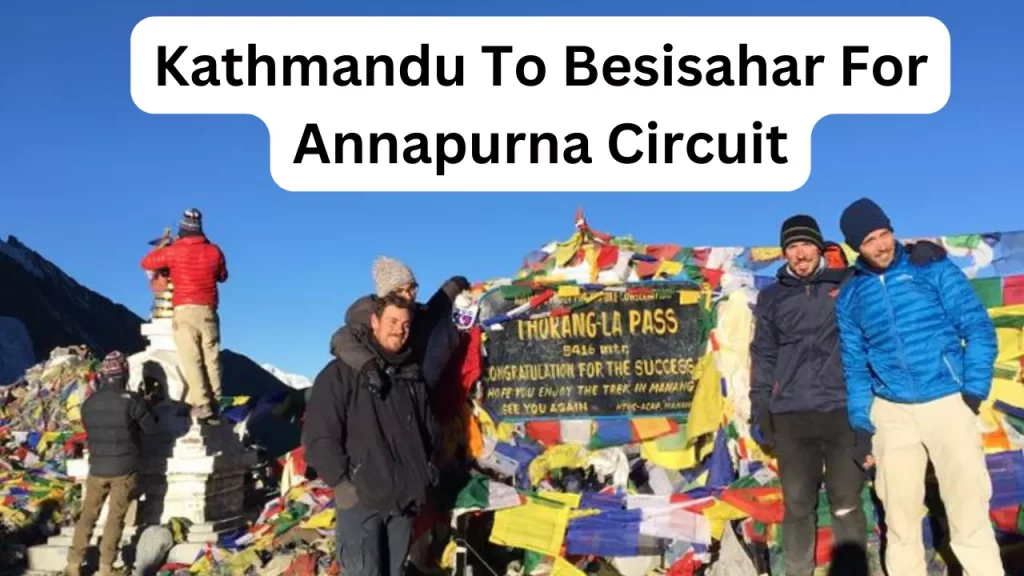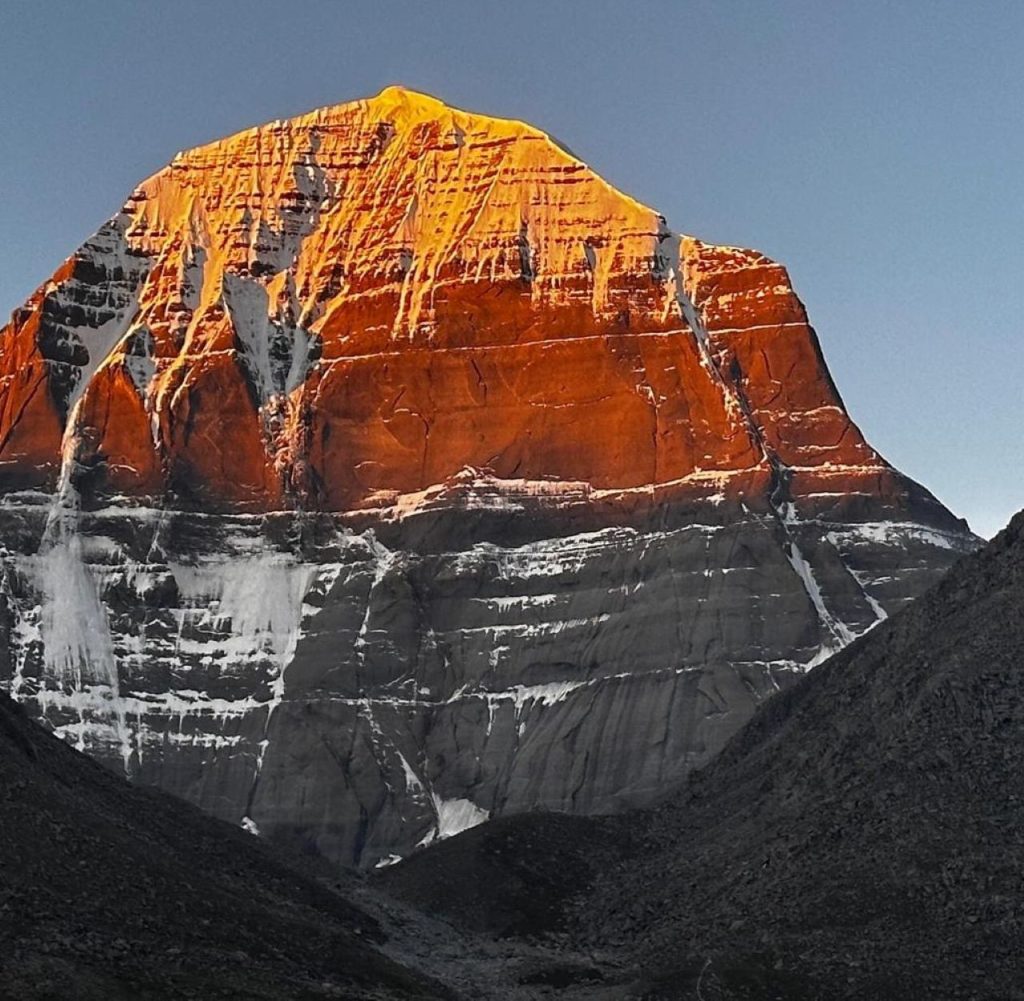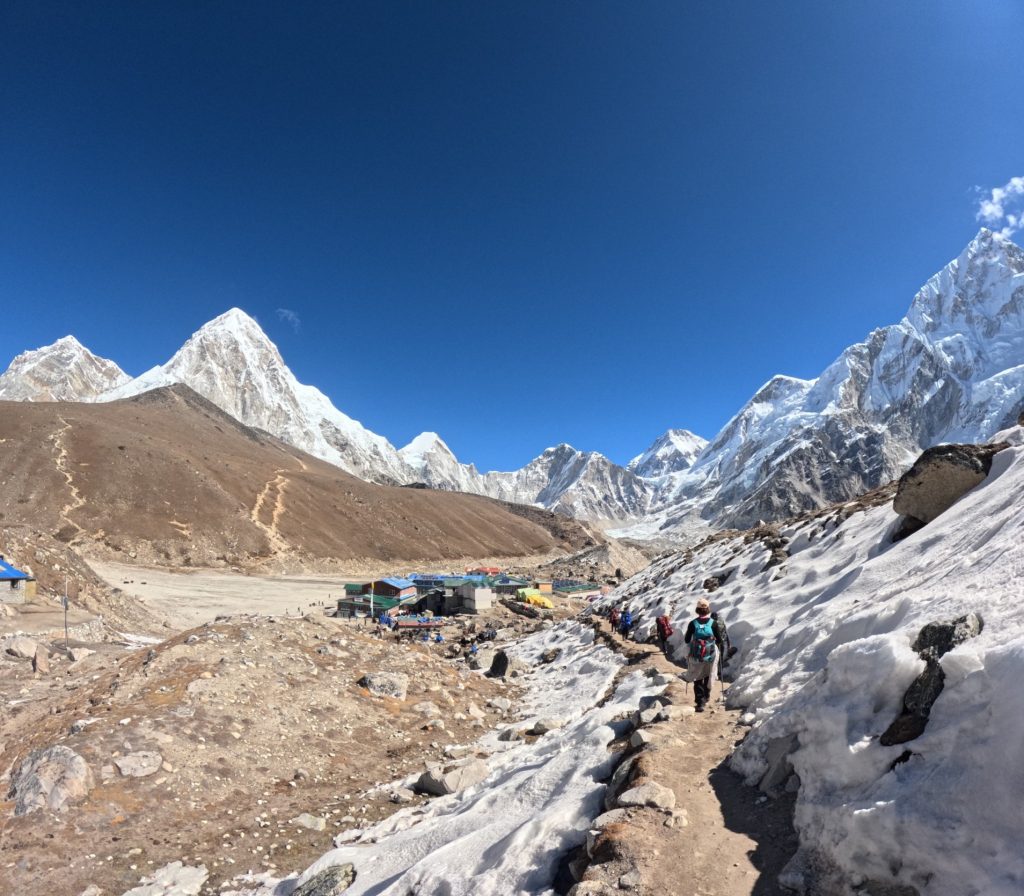In this blog article, we would like to answer all your questions and clarifications about preparation for Langtang Gosaikunda Trek. We will make sure your preparation is complete, whether you are a professional trekker or just getting on to your Himalayan expedition for the first time.
Ranging from providing the essentials and fitness tips to understanding the country’s conditions and culture, the aim is to give you all that is required for a secure, comfortable, and enjoyable trek in the beautiful Langtang range.
Perhaps you have been to Everest and Annapurna Base Camps, but Langtang Gosaikunda Trek is the last one you should not miss. This hike showcases broad landscapes ranging from high mountain views to peaceful alpine lakes and also cultural experiences similar to other renowned siblings. At the Langtang Valley, this trek takes travelers to areas of fields, forests, villages, and mountaintops and ends at the lakes of Gosaikunda. This is the main purpose of the trip.
The Langtang – Gosaikunda trek, with its impressive variety of landscapes, native plants, and animals, as well as friendly Tamang and Sherpa people, is a stimulating experience. For the thrill of getting off the trail, it is a once-in-a-lifetime event.
Therefore, shall we move on and get rid of the chicken hearts and faintheartedness that you might have towards this fabulous adventure trip in the Himalayas?
Table of Contents
Understanding about Langtang Gosaikunda Trek
The crucial thing that trekkers should do before embarking on Langtang Gosaikunda Trek is to grasp the essence of Langtang Gosaikunda Trek. For that reason, it is essential to undertake good research. The Langtang Gosaikunda trek has a diverse zigzag trail, which is ideal for both beginners and experienced trekkers. It is a combination of narrow, rough, winding, foresty parts and some steep descents and ascents.
Certain portions of the route are comparatively flat, while others require scaling up steep ridges or even crossing perilous suspension bridges over roaring rivers. Trekkers should be prepared for varying weather conditions, including occasional snowfall and rain, especially at higher elevations. After understanding about the trek, trekkers should make proper plans and preparations accordingly.
Choosing the Right Trekking Agency
Choosing the right trekking agency is crucial for a successful Langtang Gosaikunda trek. Look for agencies with a solid reputation, experienced guides, and a commitment to sustainable tourism. Reviews and testimonials from past trekkers can provide valuable insights into the agency’s reliability and professionalism.
Additionally, consider the range of services offered, including transportation, accommodation, and emergency support. Opt for agencies that are flexible and willing to customize the itinerary to meet your specific needs and preferences. By selecting a reputable and reliable trekking agency, you can embark on your Langtang Gosaikunda adventure with confidence and peace of mind, ensuring a safe and enjoyable trekking experience from start to finish.
Choose the Best Time to Go for Langtang Gosaikunda Trek
The time when you embark on the Langtang Gosaikunda Trek depends on your preferences and what kind of experience you wish to seek. Spring (March to May) and autumn (September to November) are referred to as peak periods as they are characterized by pleasant weather. In spring, the trails turn into a spectacular spectacle of vivid rhododendron blooms, and the weather is not cold, so trekking is usually comfortable then.
Autumn provides a clear sky, good visibility of the surrounding peaks, and calm weather, which is perfect for making a superb landscape photo and feeling the fresh air that makes one really alive. While these peak seasons may lead to more crowds and higher lodging and permit costs, it is still important to note these.
On the other hand, Winter (December to February) and Summer (June to August) each provide their own singular atmosphere. Winter means less crowded trails, snow-dusted panoramas, and a soothing atmosphere that will surely provide some solitude and tranquility. Although the temperatures may plummet quite notably, particularly at higher altitudes, winter hiking is not unbearable when proper gear and planning are ensured.
In summer, the vegetation is green; there are blooms of wildflowers and fewer trekkers on the trails. On the other hand, the summer period is also the monsoon season with heavy rainfall and a gray sky that is not expected to be conducive for hiking. Actually, every season is good in its own way and has its highs and lows, so when making your plans, you’d better think about what exactly is important to you.
Choose the Best Itinerary for Langtang Gosaikunda Trek
When you choose a trekking agency, be sure to pay attention to what the itinerary is. Few agencies provide shorter itineraries to save time or money, but those abridged plans often have fewer acclimatization days. The absence of an acclimatization period enhances altitude sickness and other health issues that are connected. It is vital to put your health first and choose the right itinerary, whether this means a longer trek or not, through the use of the right itinerary with enough acclimatization days.
Choose the Right Gear and Equipment
Each trekking season in Nepal offers a unique weather experience. Understanding what to expect during each season adds an extra layer of enjoyment to your journey. Laurebina La Pass(4610 m) is the highest point of the Langtang Gosaikunda trek.
Reaching such an altitude is not an easy job, so you need to pack all the essential items wisely. The clothing and equipment to bring must be suitable for the trek and season. The weather is unpredictable, especially in high altitudes, so preparing in advance will protect you from unseen circumstances.
Also, while buying clothing and other equipment, it’s better to buy one that suits all types of treks and seasons. Here are the things that you need to consider before you pack your backpack:
- Plan according to the weather conditions, like rain, snow, heat, or cold.
- Research the terrain and elevation of your trekking route.
- Pack lightweight, moisture-wicking base layers, insulating mid-layers, and waterproof outer layers. Include extras like gloves, hats, and socks.
- While buying, check Durability, Comfort Features, Reviews, Recommendations, Brand Reputation, Try Before You Buy, Versatility, and Materials.
Buying and Renting Gears in Nepal
If you don’t have time to arrange all the required essential items in your home country, then don’t worry. You can buy or rent here in Nepal. The best place to rent the item is in the Thamel area. If you are confused about where to find the rental office, then don’t panic. We will assist you in finding the best rental shop.
Worth Reading: Nepal Trekking Packing List
Maintain Physical Fitness
During Gosaikunda and Langtang Valley trekking, you will cover an average of 177 km. On our 11-day trek itinerary from the Third Eye adventure, you will need to walk 4-6 hours daily. Walking at a higher altitude on difficult terrain demands physical fitness along with mental fitness. So whether you are a beginner or an experienced trekker, maintaining physical fitness is key to success for this trek.
For the beginners, let’s know more about how to maintain physical fitness for this trek.
Prepare Early: After you decide to join this beautiful trek in the Langtang region, you must prepare yourself at least 2-3 months in advance. The better you prepare, the more likely you are to succeed and have a smoother, more comfortable journey.
Cardiovascular Fitness: Cardio, also known as aerobic or endurance exercise, includes any activity that makes you breathe harder and raises your heart rate. Doing the cardio exercise will help you walk in the high-altitude areas. For aerobic exercise, you can do things like walking, jogging, running, cycling, swimming, aerobics, rowing, stair climbing, hiking, etc.
Strength Training: Joining the gym will be the best option to increase your body’s physical strength. While joining the gym, make sure you train with a professional so that you will not harm your body.
Endurance Training: This training is also best to maintain physical fitness. Brisk walking or jogging, mowing, raking, dancing, swimming, biking, climbing stairs or hills, and playing games are some of the examples of endurance training you can try in your home.
Mental Preparation: There are many different things you can do to improve your mental health. To increase mental health, join a yoga class, get enough sleep, exercise regularly, be physically active, eat healthily, and meditate.
Balance Diet: Physical and mental health cannot be achieved without having a balanced diet. Try to eat food and drinks that are high in nutrition, protein, vitamins, and minerals. Always keep your body hydrated, which will not only maintain good health but also help to prevent altitude sickness.
Secure the Permit and Documents
Let’s know what documents you should carry before you head to Nepal
- For trekking purposes, you must require a Passport with at least six months of validation
- Travel Insurance Certificate. Before beginning the trek, you must show proof of travel insurance.
Let’s know about the permit that is required for this trek.
There are many famous treks while you are traveling in the Langtang Region, like Langtang Valley Trek, Gosaikunda Trek, Helambu Trek, etc. Similar to this trek, the Langtang Gosaikunda trek also requires a permit as you will be walking the conservation area. This permit is easily available in Nepal after you submit legal documents and pay the fee that is required for this trek.
TIMS CARD
This card is mandatory in Nepal before joining any trek in Nepal. You can easily get this card from Nepal Tourism Board offices located in Kathmandu and Pokhara. To obtain this card, you need a passport and two passport-sized photos. This card will cost you US $30 (Nrs. 3000) per person.
Langtang National Park Entry Permit
You must pass through the Langtang National Park for this, which is listed as a conservation site in Nepal. So, it’s mandatory to have this national park permit for this trek. You can obtain this permit in the Nepal Tourism Board office in Kathmandu or at the entry point in Dhunche. For SAARC countries, it will cost NPR.1695; for other countries, it will cost NPR.3,000.
Note: There is free entry for children below 10. Also, to make the journey hassle-free, our trekking agency will help you get this permit on your behalf.
Hire Experienced Local Guide and Porter
A Langtang Valley trekking trip is a place to connect with nature and the rich cultural legacy of Nepal. For a great experience, engaging the services of experienced local tour guides and porters is highly recommended. These people, who know the land well and the nuances of the local area, are the most valuable guides in the whole journey.
Trekkers can rely on the guides’ guidance, get information about the local customs and traditions, and discover the hidden spots along the route. Additionally, local guides and porters make trekking safe and help understand the community and landscapes better.
At the same time, porters’ wages directly support economic development in the region.
When trekkers pay to enjoy the wilderness, the local hardworking residents benefit indirectly. Moreover, the guides and porters who are there to accompany you further add to the authenticity of the trekking experience, enabling you to bond with the locals and the destinations in Langtang Valley. In the end, with the help of local guides and porters, trekkers undergo a journey that is safer, more comfortable, culturally rich, and socially responsible.
Be Aware of Altitude Sickness
Altitude sickness occurs due to reduced oxygen levels in the atmosphere, typically at elevations exceeding approximately 2,500 meters above sea level. This condition manifests when the body hasn’t had adequate time to acclimatize to the decreased oxygen availability at higher altitudes. Similarly, in the Langtang Gosaikunda trek, you will be walking above 4000m altitude, so altitude sickness might arise. Therefore, you must prepare for altitude sickness.
The common form of altitude sickness is Acute Mountain Sickness, known as AMS. If altitude sickness becomes more serious, it leads to high altitude pulmonary edema (HAPE) and high altitude cerebral edema (HACE). Failure to take altitude seriously can have severe consequences, including potentially fatal outcomes.
Symptoms of AMS
- Headache (this is the most common symptom).
- Nausea and vomiting.
- Loss of appetite.
- Fatigue, even when resting.
- Malaise
- Trouble sleeping.
- Dizziness or lightheadedness
It’s preventive measures
- Altitude sickness is more likely to happen when you ascend too far and too fast, so limit how fast you ascend.
- Take rest days to acclimate.
- Sleep at a lower altitude if possible.
- Medications like acetazolamide or nifedipine can prevent altitude sickness and treat it.
- Drink enough water to keep your body hydrated all the time
- Don’t smoke or consume alcohol
Safety Precautions Tips
- Trek with a licensed guide or in a group for added safety and assistance if needed.
- Be aware of symptoms of altitude sickness and descend if experiencing severe symptoms.
- Stay informed about current trekking conditions and advisories from local authorities or trekking agencies.
- Dress appropriately for changing weather conditions, including rain gear and warm layers.
- Ensure trekking equipment is in good condition, including sturdy boots and a well-fitted backpack.
- Carry essential emergency supplies such as a first aid kit, emergency shelter, and navigation tools.
- Stick to designated trails and avoid shortcuts to minimize the risk of accidents or getting lost.
- Respect local customs, traditions, and sacred sites encountered along the trekking route.
- Seek permission before photographing individuals or religious artifacts.
- Respect wildlife and maintain a safe distance, especially from potentially aggressive animals such as yaks.
Managing the Budget
Preparation for the trek without diligent budget management is absolutely ineffective. Make sure you set aside the money properly to cover all aspects of your trip that it’s guaranteed you’ll experience from start to end seamlessly and delightfully. Think about all conceivable expenses, like international airfare, trekking package price, buying or renting gear and materials, and food and drink bills along the track.
Remember to keep in mind the budget for required permits and other incidentals like gratuities and tips and to buy souvenirs for the memory of your journey. Through proper budget management, you are able to release yourself from the burden of financial stress and immerse yourself fully into the amazing road before you.
Conclusion
Trekking in the Langtang and Gosaikunda area has been an excellent journey that was full of fascinating scenery, cultural involvement, and unforgettable moments. The peaks of the Langtang Himalayas are towering, and Gosaikunda lakes are serene; every step is deeply engraved in our hearts.
Leaving this amazing place, we will have memories that will be close and a clear understanding of the Nepalese people and their spirit. This trekking route clearly shows how traveling can change a person, making them appreciate nature and embrace the diversity of our planet. I hope you love reading about how to prepare for the Langtang Gosaikunda Trek. If you would like to book this package or visit Nepal for any tour, trekking, or peak climbing, please WhatsApp or contact us.





